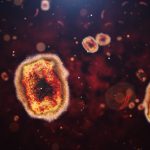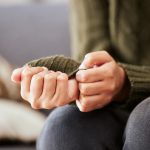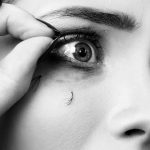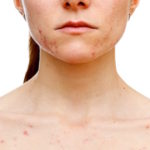My wife and I recently became vegetarians. Well, she started using the word “vegetarian” to describe already never eating meat. For me it required more of a lifestyle change. I grew up on a small beef cattle farm, so I was used to the idea that you could grow meat the same way you grow vegetables. Throughout my life it always felt as if meat was how one defined the difference between a “snack” and a “meal”. So as part health experiment and part social consciousness attempt, I have given up meat for the time being.
At first I felt like I was denying myself something purely enjoyable. I’m used to it, I like it, so why don’t I just do it? Saying, “I want to change” or “I’m not happy with the consequences” doesn’t seem to be much comfort. However, nearly 4 months into this experiment, I now get what can only be described as a “resistor’s high” – an addictive satisfaction derived from choosing not to eat meat.
The other night I had dinner at someone’s house and literally had to stare down an absolutely gorgeous pork chop fresh off the grill. It appeared to be taunting me as I ate the otherwise perfectly delicious pasta and veggie sides, but I made a conscious effort to reserve analyzing the situation until after dinner. As it turns out, it felt great not to have eaten the pork chop because it felt great to have committed to a choice. I even get a similar buzz from locating and ordering the vegetarian options on restaurant menus. So what is this phenomenon?
When you do something for a long time without putting much thought into it, you begin to adopt it as part of your worldview. I live in a world where meat is something to be eaten every day. So not eating meat every day seems like a different world. Similarly, people who grow up engaging in body-focused repetitive behaviors like Trichotillomania (Hair Pulling Disorder) and Dermatillomania (Skin Picking Disorder) often fail to identify these behaviors as problematic until the consequences are impossible to ignore. They live in a world where hair gets pulled and skin gets picked. If you pull and/or pick every day, and it feels good, how do you find the strength to stop only because you know you should?
Trichotillomania (TTM) and Skin Picking Disorder function as both behavioral addictions and Obsessive-Compulsive Spectrum Disorders. As an addiction, a behavior is repeated for a reward, but the reward becomes increasingly difficult to obtain and the behavior continues to be repeated to excess. The good feeling
that comes from picking one’s skin or pulling one’s hair is soon followed by a sense of shame and helplessness as the brain prepares itself to motivate for the next fix.
Viewed from the perspective of obsessive-compulsive spectrum disorders, both Trichotillomania and Dermatillomania sufferers have distorted thoughts about their ability to experience and resist uncomfortable urges. The desire to engage in the addictive behavior is made greater by the fear that feeling and resisting the urge will be overwhelming and unmanageable. Perhaps as a more familiar analogy, a compulsive hand washer may intellectually understand when washing is unnecessary, but feels that the anxiety produced by not washing is too painful to be tolerated.
Treatment for Trichotillomania and Dermatillomania follows two parallel Cognitive Behavioral Therapy (CBT) protocols to address both the obsessional urge and the behavioral addiction:
- Habit Reversal Training (HRT) uses a straight-forward pragmatic approach of blocking the addictive behavior with non-destructive alternatives. This could involve anything from making picking too difficult by wearing gloves, to covering mirrors to aid in resisting checking, to occupying the hands with a competing stimulus (such as a stress ball or piece of string). HRT also involves strategies for helping the individual with Trichotillomania or Dermatillomania become more aware of the behavior when it might otherwise be performed absent-mindedly.
- Mindfulness-Based Cognitive Behavioral Therapy uses a combination of mindfulness, cognitive restructuring, and behavioral conditioning:
~ Mindfulness – learning to acknowledge that sensations, feelings, and thoughts about pulling and picking are inevitable, normal occurrences that do not intrinsically mean you have to pull or pick;
~ Cognitive Restructuring – identifying the thoughts, feelings, and sensations that precede the behavior and challenging the distorted thoughts that make the behavior more difficult to resist;
~ Behavioral Modification – while treatment for Trichotillomania and Dermatillomania typically does not involve exposure the way it does in the treatment of Obsessive Compulsive Disorder (OCD) and other OC spectrum disorders, it does involve practicing the ability to tolerate the anxiety that comes from experiencing and resisting an urge.
 Finding your personal “resistor’s high” will likely mean employing all of the above techniques simultaneously. To learn to love the feeling of not picking and pulling, you need to experience it for extended periods. People tend not to enjoy training for marathons, but they do appear to enjoy completing them. The early work toward overcoming Trichotillomania and Dermatillomania involves regular confrontation with discomfort, and faith that your resitor’s high will come in time.
Finding your personal “resistor’s high” will likely mean employing all of the above techniques simultaneously. To learn to love the feeling of not picking and pulling, you need to experience it for extended periods. People tend not to enjoy training for marathons, but they do appear to enjoy completing them. The early work toward overcoming Trichotillomania and Dermatillomania involves regular confrontation with discomfort, and faith that your resitor’s high will come in time.
By using HRT to interfere with your ability to pull or pick, mindfulness to accept your urges as they are, and cognitive restructuring to address your distorted beliefs about your ability to resist those urges, you can then practice absorbing and digesting the urge. Taking the urge in and letting it wash over you becomes increasingly rewarding when paired with resisting the urge over time. In the end, the behavioral addiction can be replaced by fascination with one’s own ability to emerge victorious from inner struggles.
To take our free online test for Trichotillomania / Hair Pulling Disorder, click here.
To take our free online test for Dermatillomania / Skin Picking Disorder, click here.
To read our series of articles on Skin Picking Disorder / Dermatillomania, click here.
To read an excerpt of from our free special report “Skin Picking Disorder: Top Twelve Roadblocks to Recovery”, click here.
•The OCD Center of Los Angeles is a private, outpatient clinic specializing in Cognitive-Behavioral Therapy (CBT) for the treatment of OCD and related conditions, including Trichotillomania and Dermatillomania. In addition to individual therapy, the center offers six weekly therapy groups, as well as online therapy, telephone therapy, and intensive outpatient treatment. To contact the OCD Center of Los Angeles, click here.





























































8 Comments
Thank you for this very insightful and helpful article!
Thank you for your example with not eating meat. It is very helpful to know someone understands the urges. Reading your article helped me realize the tools I need to stop the urge to pick. I feel more empowered, Thank you. If you know of any groups in the Riverside County please let me know.
Val and C.N., thank you both for your kind comments! Knowing that this blog may be helping people and encouraging them to think differently about their challenges is very rewarding!
C.N., sorry I’m not familiar with any groups in Riverside County. Our current group therapy sessions for adults with Trichotillomania and Dermatillomania run weekly on Saturday afternoons here at Brentwood location of the OCD Center of Los Angeles. We also offer individual therapy, online therapy, and an intensive treatment program.
I liked the comparison of fighting these disorders vs running the marathon. However I think that major difference here is that there’s no marathon at the end of practice, there’s no single event for which you train, it’s a constant struggle.
Hi,
My daughter, 9 years old, suffers from ocd. SHe picked her skin in the beginning of last years school year but stopped after 6 months. We had 6 months of good days – she was on Prozac and Strattera. This May, she started picking her hair. The whole top is bald now and she is working on the sides. We see a psychiatrist once a month and a psychologist weekly. They say it is the worse case of trich they have ever seen. My husband and I are beside oursleves and do not know how to get her to stop. She is on Luvox now. SHe says she doesnt know what she is doing and when, but it happens every day and she will be completely bald soon. I would love to send you pictures We are desperate. GLoves and things like that wont work as she is in school. We have tried a koosh ball and keeping her hands busy to no avail. Until your article, I didnt know it was a pleasure – I thought she was so upset about something, but wont tell us what it is. WOuld love to talk to you Thanks
Astute observation, Ann! But I would say “life” IS the marathon! Completing this marathon means looking back on your life story as one in which you overcame ongoing challenges or at least kept fighting amidst adversity. The prize is not giving up.
I’ve been researching TTM for years (I’ve been hair pulling for about 10 years) and have never found an article as illuminating as this one. I like the idea of the “resistor’s high:” it really puts things into a different perspective and makes me more hopeful about stopping. Thanks!
Thanks for the comment, Laura. I’m happy the article resonated with you and wish you the best of luck in overpowering your Trichotillomania!